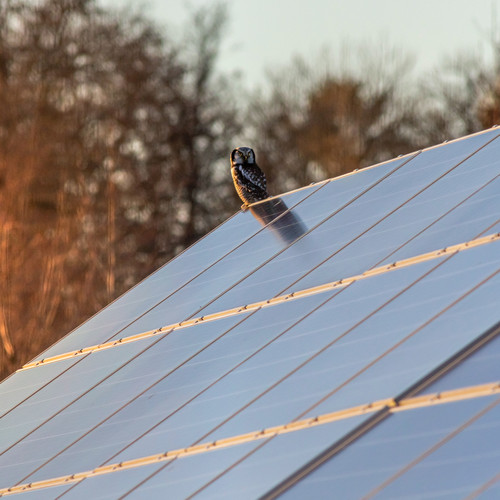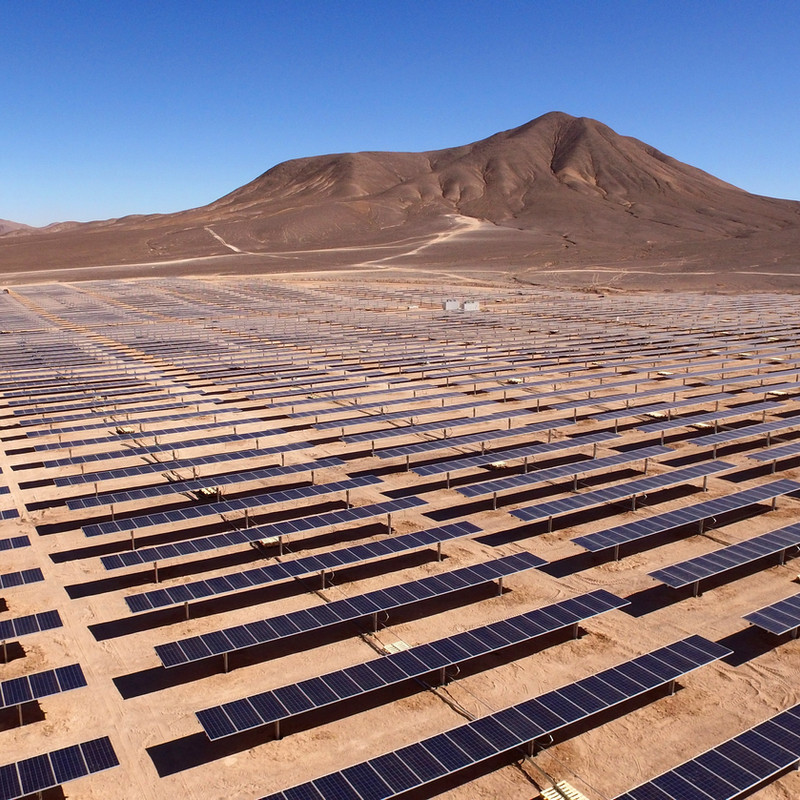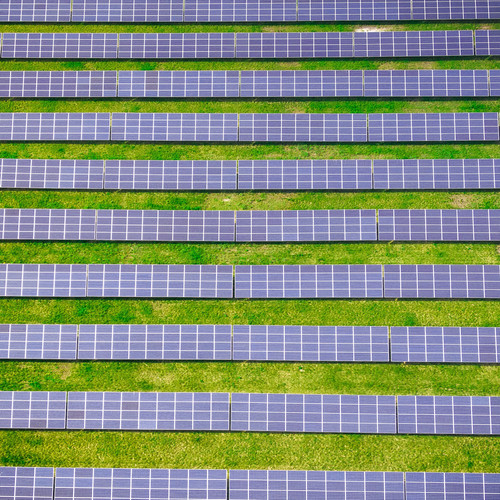Solar energy or solar power is energy from the sun that is converted into thermal or electrical energy. Solar energy is the cleanest and most abundant renewable energy source available, and the U.S. has some of the richest solar resources in the world. Solar photovoltaic (PV) technology converts sunlight into electricity, and it can be used on a small scale (e.g., for solar powered calculator) or a large scale (e.g., for solar power plants).
Solar Photovoltaic Cells
Solar photovoltaic (PV) cells are the basic building blocks of solar panels. Solar PV cells are made from a semi-conducting material, usually silicon, that converts sunlight into electricity. Solar PV cells are connected together in modules, or panels, to form a solar array. Solar arrays can be used to power homes, businesses, and even entire power plants.
Solar PV products are becoming increasingly available. Solar PV panels are now being used in a variety of applications, including powering homes and businesses, generating electricity for the grid, and providing portable power for camping, boating, and other outdoor activities. Solar PV products are also being used to generate electricity for electric vehicles.
Un-recyclable waste from solar panels, however, continues to be a major issue. Solar panels are often made from a variety of materials, including lead, cadmium, and other toxic chemicals. Solar panel waste is expected to increase as the industry grows.
Solar Water Heating Systems
Solar water heating systems use sunlight to heat water for domestic or commercial use. Solar thermal power plants convert sunlight into electricity by using mirrors to focus a large area of sunlight onto a small area. Solar power is an increasingly important part of our energy mix, and it offers a number of benefits over other energy sources.
In Israel, solar water heating systems are mandatory in all new buildings, and the use of solar energy has reduced the country’s dependence on imported fossil fuels. Such solar systems can be seen on the rooftops of many buildings in throughout the country. Solar power is also being used to desalinate water in some areas of the world.

But how do solar water heating systems work? Solar water heating systems use sunlight to heat water for domestic or commercial use. Solar thermal collectors capture the sun’s energy and transfer it to a fluid, which is then used to heat water in a storage tank. Solar water heaters typically have an efficiency of around 70%.
Benefits of Solar Energy
Solar power offers a number of advantages over other energy sources:
- Carbon-free – Solar energy does not emit greenhouse gases when generating electricity, and it can offset emissions from other sources.
- Renewable – The sun is a virtually limitless source of energy, and solar power can be harnessed in many different ways. Solar photovoltaic (PV) technology converts sunlight into electricity, and it can be used on a small scale (e.g., for solar powered calculators) or a large scale (e.g., for solar power plants). Solar thermal power plants convert sunlight into electricity by using mirrors to focus a large area of sunlight onto a small area.
- Sustainable – Solar energy can be captured and used indefinitely, making it a sustainable energy source. Solar power is also a very versatile energy source that can be used in a number of different ways.
- Efficient – Solar PV technology has an average efficiency of around 15%, meaning that it converts around 15% of the sunlight that hits it into electricity. Solar water heating systems have an average efficiency of around 70%.
- Low maintenance – Solar energy systems require little or no maintenance once they are installed, and they have a long lifespan. Solar PV panels have an average lifespan of 25-30 years, and solar thermal collectors can last for 20-30 years.
- Increasingly affordable – The cost of solar PV panels has fallen by more than 60% since 2010, and the cost of solar thermal collectors has fallen by around 50% over the same period. Solar power is now cheaper than coal in some parts of the world.
- Versatile – Solar energy can be used for a variety of applications, including generating electricity, heating water, and powering homes and businesses. Solar PV panels can be used to generate electricity for the grid, and solar thermal collectors can be used to heat water for domestic or commercial use. Solar power can also be used to desalinate water in some areas of the world.
Carbon Zero
Solar energy is carbon-free, which means it does not produce greenhouse gas emissions. Solar power also has a very small land footprint, and it can be integrated into the built environment (e.g., on rooftops). Solar power is a versatile energy source that can be used to generate electricity, heat water, and even power vehicles. It is a clean, renewable energy source that offers many benefits over traditional fossil fuels. Solar PV systems are an important part of the transition to a clean energy future.
Solar Energy in China
China is the world’s leading producer of solar photovoltaic cells and modules, and it is also the world’s largest consumer of solar PV products. Solar PV installed capacity in China has grown rapidly in recent years, reaching 77.42 GW by the end of 2017. This rapid growth is due to a number of factors, including the Chinese government’s commitment to renewable energy, favorable policies and subsidies, and the country’s large market size.
Throughout 2018, China continued to dominate the global solar market, accounting for 58% of new solar PV installations. Solar power is an important part of China’s energy mix, and the country has set ambitious targets for future growth. The Chinese government pledged to install 1 GW of new solar PV capacity every day between 2018 and 2020, which resulted in a total installed capacity of over 200 GW by the end of 2020.
Solar Energy in the United States
The United States is one of the world’s leading producers of solar photovoltaic cells and modules, and it is also a major consumer of solar PV products. Solar PV installed capacity in the United States has grown rapidly in recent years, reaching 42.3 GW by the end of 2017. This rapid growth is due to a number of factors, including the U.S. government’s commitment to renewable energy, favorable policies and subsidies, and the country’s large market size.

The United States continues to be a leading solar market, accounting for at least 10% of new solar PV installations. Solar power is an important part of the U.S. energy mix, and the country has set ambitious targets for future growth. The U.S. government has pledged to install 100 GW of new solar PV capacity by 2030, which would result in a total installed capacity of over 300 GW by that date.
Solar Power in California
In California, Solar Power is a requirement in the building of new homes. As of January 1, 2020, all new homes built in California must have solar photovoltaic (PV) systems installed. This requirement is a result of the California Solar mandate, which was passed by the state legislature in 2018.
The Solar mandate is part of California’s larger goal to achieve 100% renewable energy by 2045. Solar PV systems are a key technology that will help the state reach this goal, as they can provide clean, carbon-free electricity. The mandate is expected to increase the cost of new homes in California by an average of $9,500. However, homeowners are expected to save an average of $19,000 over the life of their PV system.
Solar Power in India
India is one of the world’s leading producers of solar photovoltaic cells and modules, and it is also a major consumer of solar PV products. Solar PV installed capacity in India has grown rapidly in recent years, reaching 20 GW by the end of 2017. This rapid growth is due to a number of factors, including the Indian government’s commitment to renewable energy, favorable policies and subsidies, and the country’s large market size.
In 2018, India continued to be a leading solar market, accounting for 8% of new solar PV installations. Solar power is an important part of India’s energy mix, and the country has set ambitious targets for future growth. The Indian government has pledged to install 175 GW of new solar PV capacity by the end of 2022, which would result in a total installed capacity of over 200 GW by that date.
Solar Power in Japan
Japan is one of the world’s leading producers of solar photovoltaic cells and modules, and it is also a major consumer of solar PV products. Solar PV installed capacity in Japan has grown rapidly in recent years, reaching 32 GW by the end of 2017. This rapid growth is due to a number of factors, including the Japanese government’s commitment to renewable energy, favorable policies and subsidies, and the country’s large market size.
Japan continued to be a leading solar market in 2018, accounting for 7% of new solar PV installations. Solar power is an important part of Japan’s energy mix, and the country has set ambitious targets for future growth. The Japanese government has pledged to install 100 GW of new solar PV capacity by 2030, which would result in a total installed capacity of over 200 GW by that date.
Carbon Offsets
Solar offsets are carbon offsets that can be purchased to offset the emissions from fossil-fuel-powered energy generation. They help support the development of new solar power projects, and they can be used to offset the emissions from your home or business. Carbon offsets are an important part of our transition to a low-carbon economy, and they offer a number of benefits for businesses and individuals to help combat climate change.

